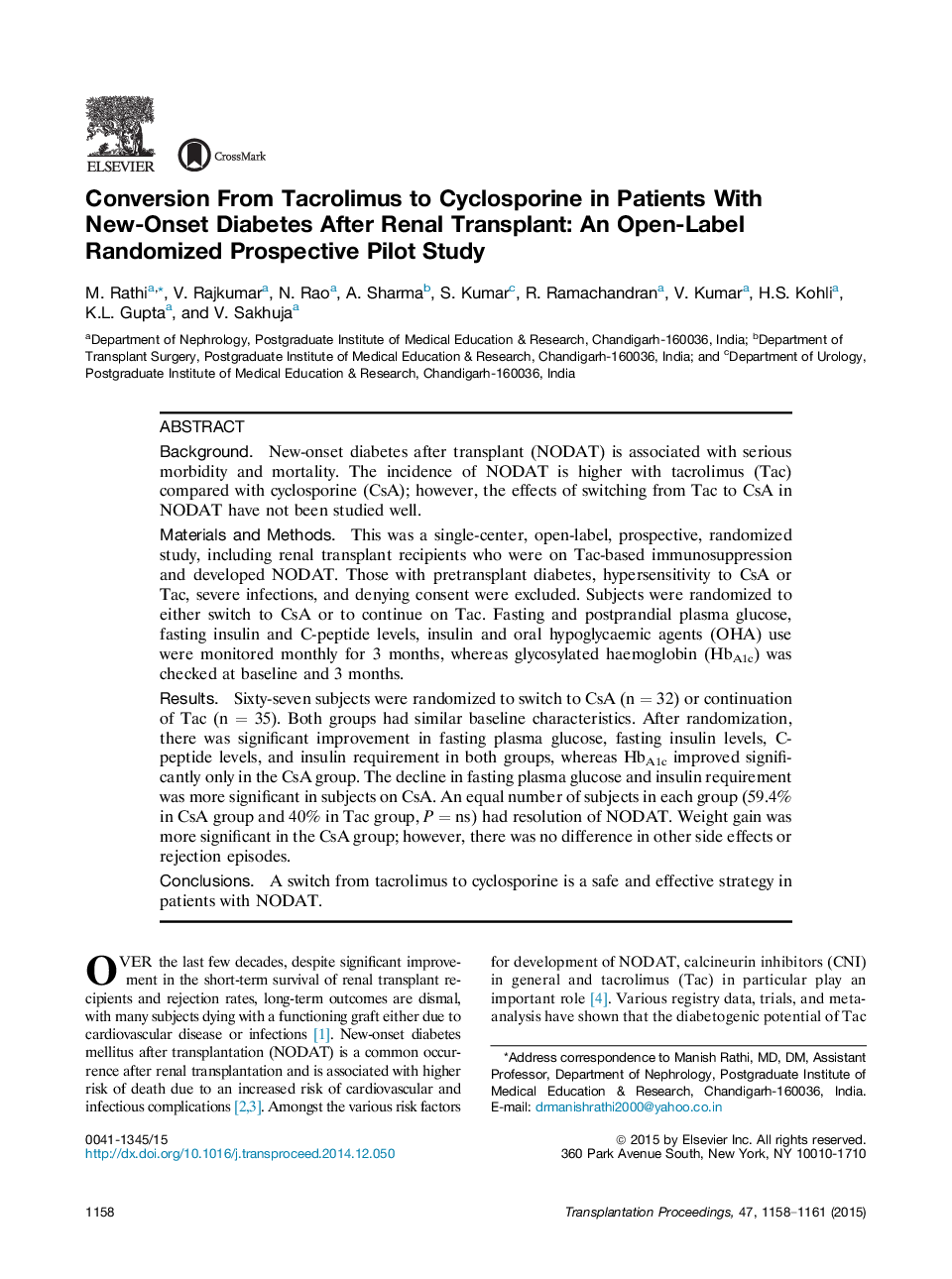| Article ID | Journal | Published Year | Pages | File Type |
|---|---|---|---|---|
| 6247505 | Transplantation Proceedings | 2015 | 4 Pages |
BackgroundNew-onset diabetes after transplant (NODAT) is associated with serious morbidity and mortality. The incidence of NODAT is higher with tacrolimus (Tac) compared with cyclosporine (CsA); however, the effects of switching from Tac to CsA in NODAT have not been studied well.Materials and MethodsThis was a single-center, open-label, prospective, randomized study, including renal transplant recipients who were on Tac-based immunosuppression and developed NODAT. Those with pretransplant diabetes, hypersensitivity to CsA or Tac, severe infections, and denying consent were excluded. Subjects were randomized to either switch to CsA or to continue on Tac. Fasting and postprandial plasma glucose, fasting insulin and C-peptide levels, insulin and oral hypoglycaemic agents (OHA) use were monitored monthly for 3 months, whereas glycosylated haemoglobin (HbA1c) was checked at baseline and 3 months.ResultsSixty-seven subjects were randomized to switch to CsA (n = 32) or continuation of Tac (n = 35). Both groups had similar baseline characteristics. After randomization, there was significant improvement in fasting plasma glucose, fasting insulin levels, C-peptide levels, and insulin requirement in both groups, whereas HbA1c improved significantly only in the CsA group. The decline in fasting plasma glucose and insulin requirement was more significant in subjects on CsA. An equal number of subjects in each group (59.4% in CsA group and 40% in Tac group, P = ns) had resolution of NODAT. Weight gain was more significant in the CsA group; however, there was no difference in other side effects or rejection episodes.ConclusionsA switch from tacrolimus to cyclosporine is a safe and effective strategy in patients with NODAT.
